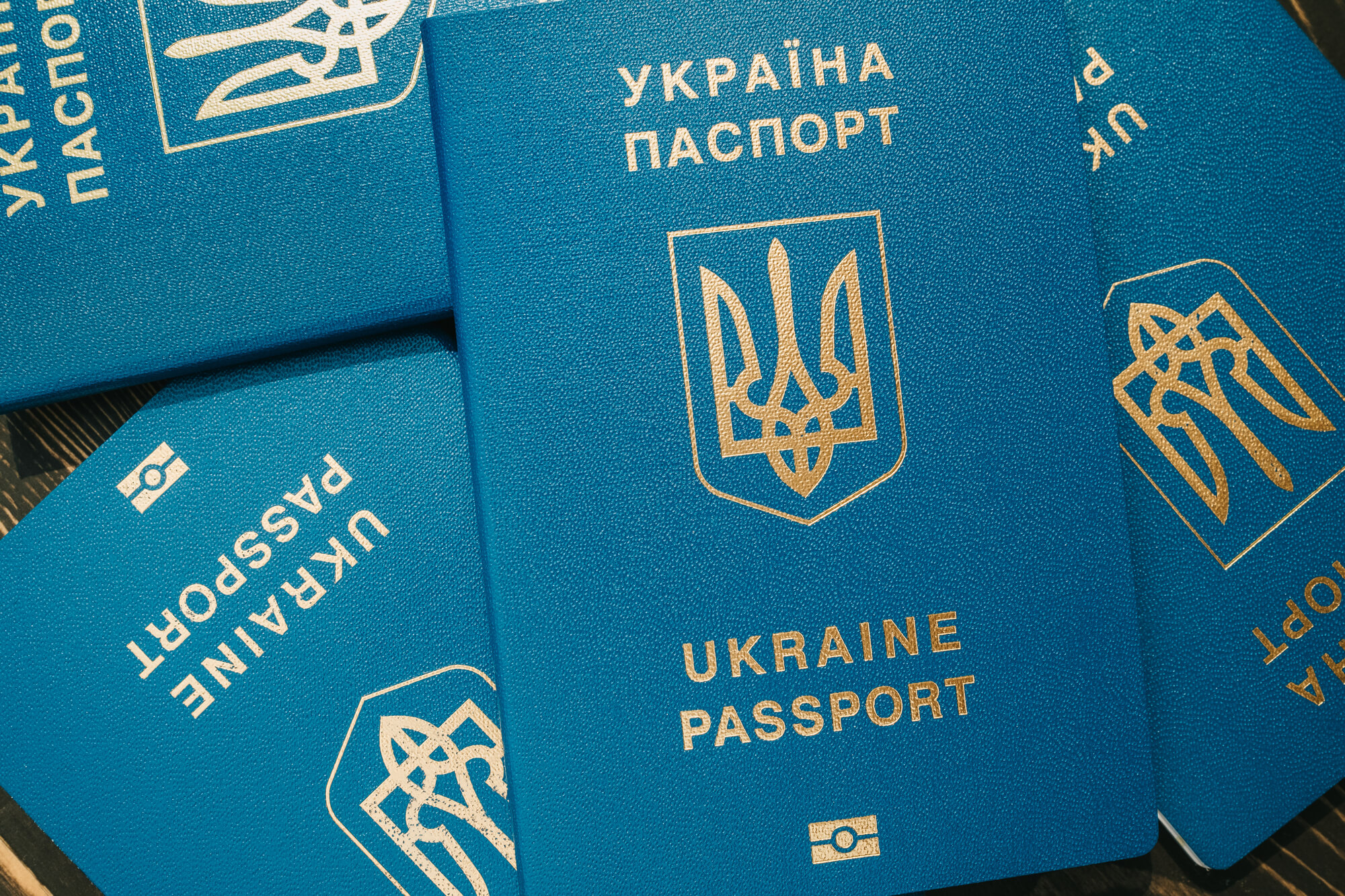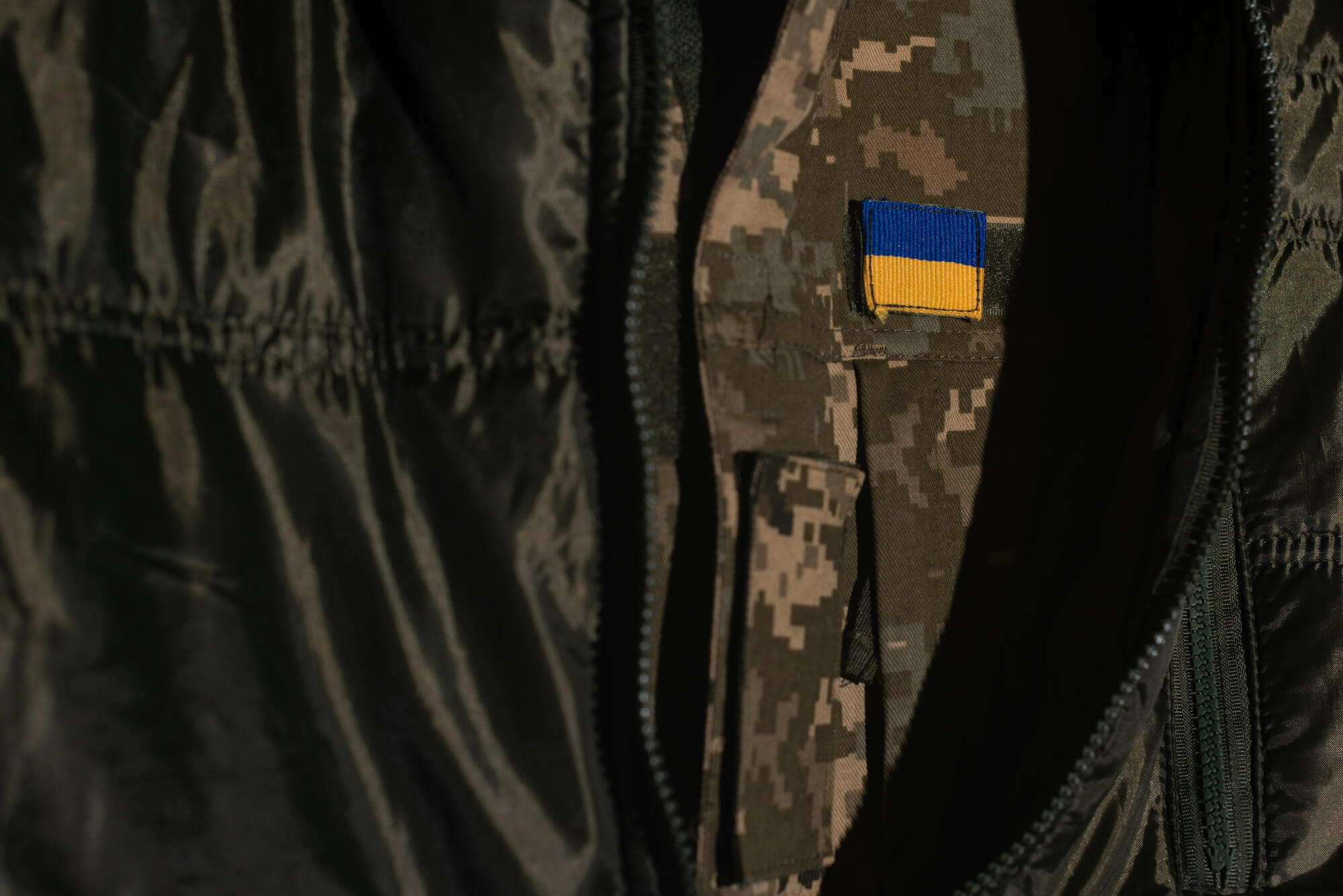Every year, the media mention Global Firepower — a “unique military ranking” that supposedly allows us to compare the strength of the world’s armies. Ukrainian media channels cite it to confirm that Ukraine ranks among the top 20 strongest armies. Russian sources use the same ranking to reinforce the narrative of having the “second most powerful army in the world”. However, there’s a nuance — the ranking includes inaccuracies in quantitative data and lacks crucial qualitative indicators. Using the 2025 ranking as an example, we show what’s wrong with this “power” ranking.
Global Firepower and Ukraine
The Global Firepower ranking was created in 2005 and is part of the MilitaryFactory network. The website states that the resource is intended for entertainment, general reference, and historical value.
This ranking is not new to the Ukrainian information space. As far back as 2017, the English-language Kyiv Post referred to Global Firepower, calling it a “think tank” and in 2018, a “defense think tank”. However, in both cases, the media acknowledged and corrected their mistakes.
In 2017, Ukraine’s Ministry of Defense also relied on data from the “comprehensive study” by Global Firepower. In 2018, then-President Petro Poroshenko also mentioned Global Firepower as an “authoritative independent analytical center”.
Every year, Ukrainian media quote this military ranking. Typically, it is not referred to as a think tank, but rather simply as a “ranking”.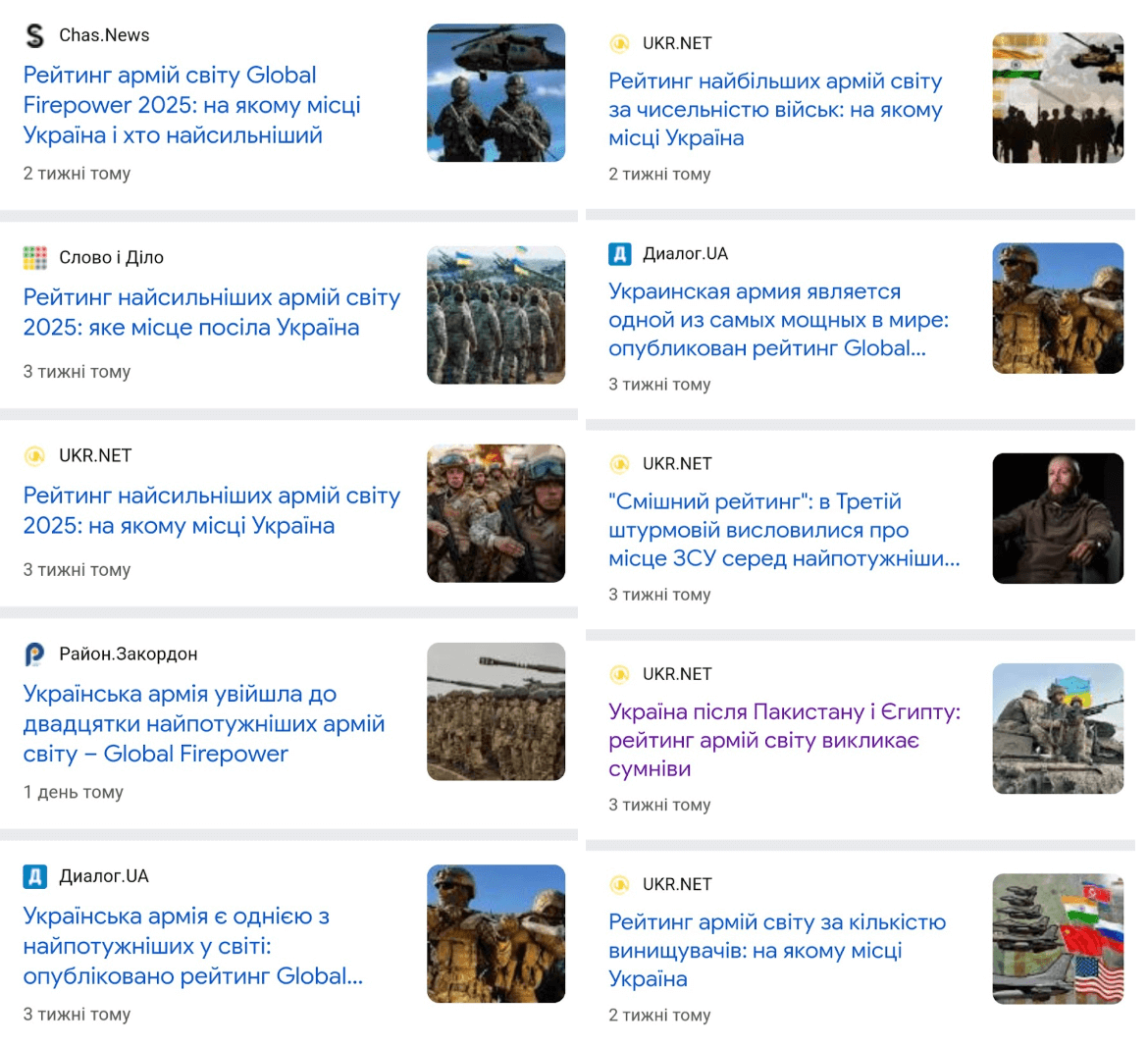
Google search screenshots
Methodology… But where is it?
The Global Firepower website states that over 60 indicators are currently considered when compiling the ranking. These include population size, military personnel, equipment, geographical location, availability of natural resources, etc. Interestingly, in 2022, they claimed to use more than 50 indicators. However, they do not explain why some indicators were added or removed.
At the same time, the ranking methodology does not include, for example, real combat experience, alliance membership, or the possession of nuclear weapons. The latter is particularly strange since in 2018, countries received extra points for having nuclear weapons. However, in 2017, it was clearly stated that this type of weapon was not considered.
Although the ranking authors claim to use a large number of indicators, they do not disclose a detailed description of their military strength formula or its calculations. In other words, its formation is not transparent. It also includes only quantitative indicators, which are inaccurate and unsupported by sources. The ranking uses data from the CIA World Factbook and “various sources”. In 2017–2018, they even used “Wikipedia”. In 2025, they still handle sources just as carelessly.
For example, according to Global Firepower, Ukraine’s total population is 35.6 million. Ukrainian officials and experts have indeed voiced similar estimates. However, the ranking authors do not name the source of their statistics, so it’s impossible to verify whether the original was quoted accurately or whether the source is reliable. The ranking also does not specify which territories are included — with those temporarily occupied by Russia or only those controlled by Ukraine. This is crucial to understand, as measuring military strength requires knowing the population of the controlled territories.
According to the government’s Demographic Development Strategy, as of July 2024, Ukraine’s total population was 35.8 million, with 31.1 million living in government-controlled territories. The source: estimates by the Institute of Demography and Social Research.
Global Firepower claims Ukraine has 2.2 million military personnel. Of these, 900,000 are active military, 1.2 million are in reserve, and 100,000 are paramilitary forces. Of course, without any citations or explanations of how they define “reserve” and “paramilitary groups”. In theory, the latter might include personnel from the National Guard of Ukraine, the State Border Guard Service, some National Police units, or volunteer territorial defense units. However, how they actually defined this category is unknown.
Defining the total number of Defense Forces personnel is no easier. In January 2025 alone, the President of Ukraine mentioned different figures: 980,000 during the interview with Lex Fridman, 880,000 during a meeting with the Polish Prime Minister, and over 800,000 in an interview with Bloomberg. He did not specify whether these figures referred to the Armed Forces of Ukraine or the overall Defense Forces. The head of Ukraine’s Defense Intelligence, Kyrylo Budanov, said back in December 2023 that the Defense Forces included approximately 1.1 million people.
So, Global Firepower not only fails to disclose sources but also does not clarify how it defines certain concepts.
It’s also unclear how they calculate military equipment. Global Firepower reported the following number of Russian tanks:
However, they only started distinguishing between operational tanks and those in storage in 2023:
- 2023 — 8168 operational (total in storage — 12 566);
- 2024 — 10344 (in storage — 14 777);
- 2025 — 4025 (in storage — 5 750).
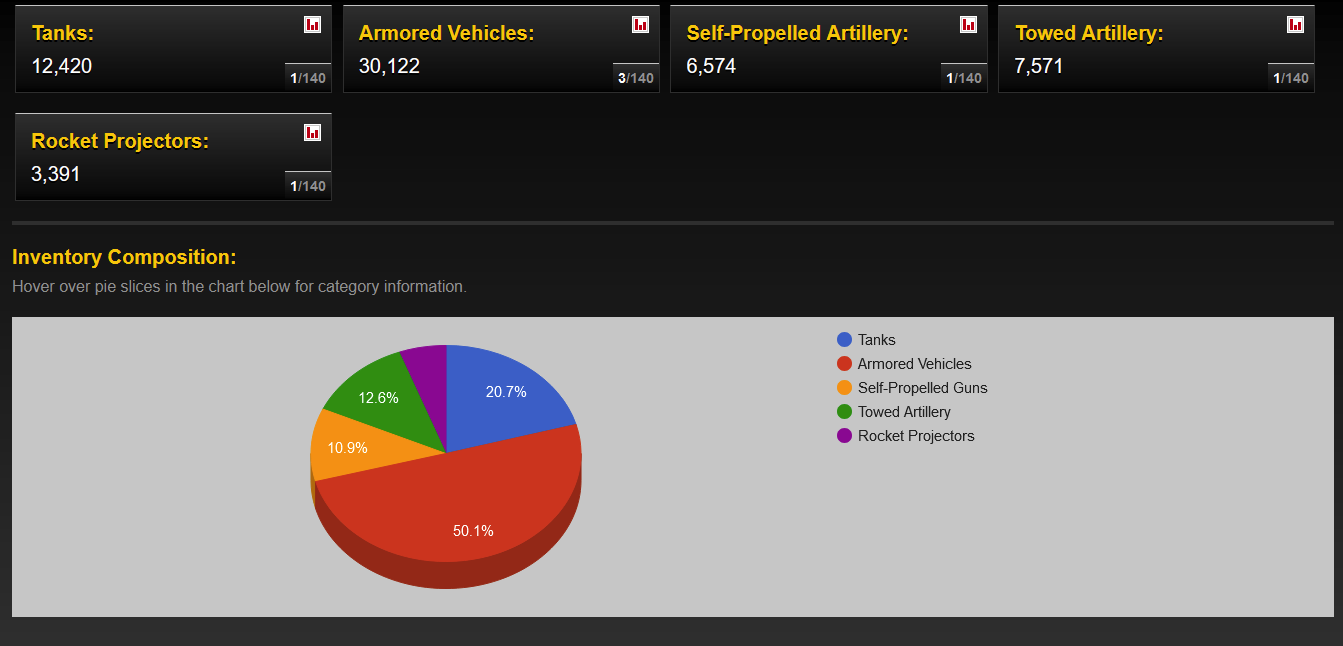
Data on the number of Russian tanks in Global Firepower 2022
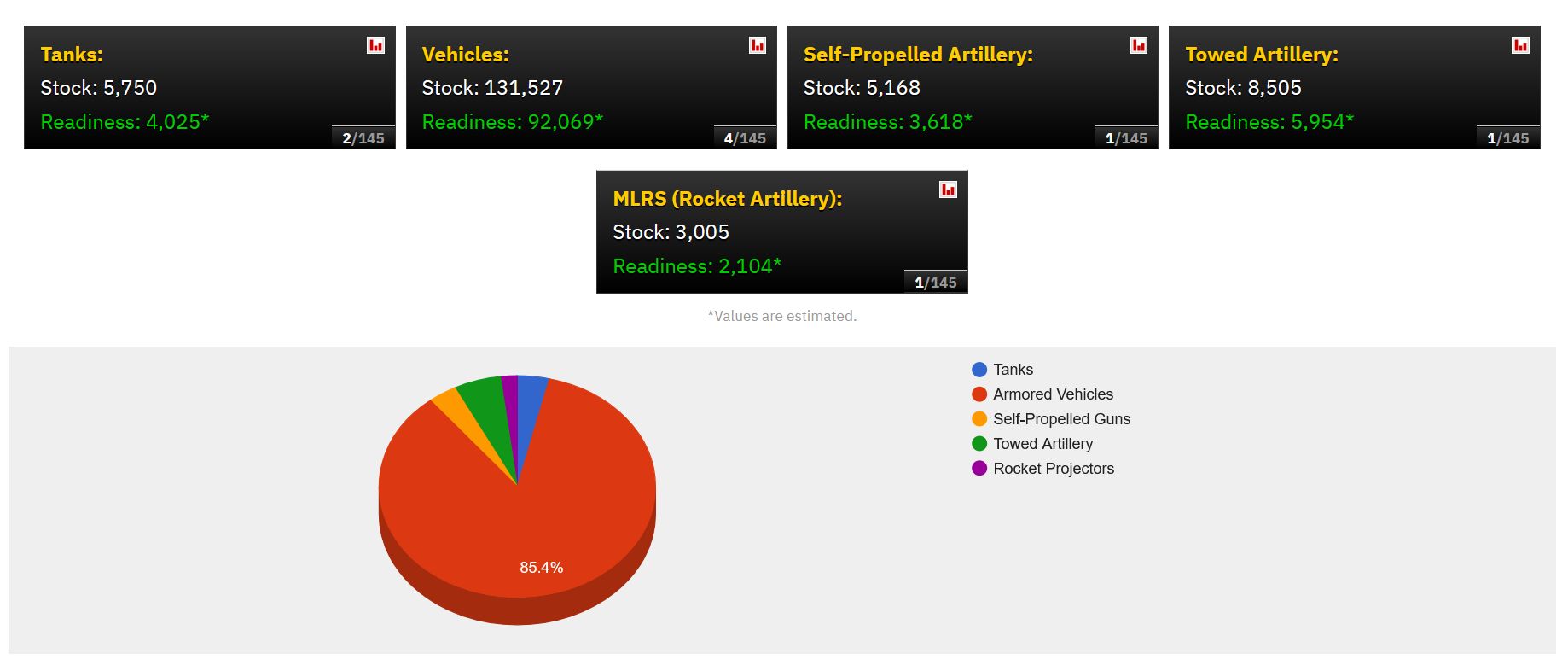
Data on the number of Russian tanks in Global Firepower 2025
Global Firepower does not explain where these numbers come from or why there are such fluctuations in tank counts. If we rely on loss estimates, tank inventories, and reserves, it’s impossible to explain why the number of tanks dropped by more than half in the 2025 ranking. OSINT analysts from WarSpotting calculated that Russia lost 1,132 tanks in 2024. Oryx recorded 3,688 Russian tank losses since the start of the invasion as of January 1, 2025.
OSINTers Covert Cabal, Jompy, Highmarsed estimate that as of the end of 2024, 3,517 tanks remained at Russian storage bases out of the 7,342 identified at the time before the invasion. Moreover, not all tanks in storage are in good condition.
According to data from the Royal United Services Institute (RUSI) dated February 13, 2024, the Russian grouping in Ukraine had 2,060 combat-ready tanks. Similar figures, but for the entire Russian army, are provided in Military Balance (February 2024 edition) — about 2,000 combat tanks and 4,000 in reserve.
Global Firepower does not analyze the drone component, even though in 2024, Ukraine created a new branch of the armed forces — the Unmanned Systems Forces. However, even before their establishment, the role of drones was significantly growing, both for striking enemy targets in the frontline zone and on Russian territory. According to the Commander-in-Chief of the AFU, in January 2025, 66% of Russian equipment was disabled thanks to various strike UAVs. Another innovation of 2024 is drone-interceptors that shoot down Russian reconnaissance and strike drones.
The same applies to naval drones — the ranking simply does not consider them. Ukraine does not have a large fleet. However, it partially compensates for this with unmanned boats. They not only destroy Russian ships, but also transform into multifunctional platforms: they deploy naval mines, are equipped with MLRS shells, and drones fitted with air defense missiles have already hit Russian helicopters. Of course, neither naval nor aerial drones can fully replace “traditional” means of destruction, but ignoring them is yet another gap in Global Firepower.
Is it possible to determine the strongest army?
There are publicly available resources that study armed forces, but there are no verified and universal “rankings of the best armies in the world.” For example, the SIPRI Yearbook, which explores military spending, arms sales and production, nuclear arsenals, or Military Balance, which indicates defense budgets or the number of military personnel, armaments. Yes, these reference books may also contain inaccuracies. But they are better than Global Firepower for at least two reasons. First, they are compiled by specialized institutions, the Stockholm International Peace Research Institute (SIPRI) and the International Institute for Strategic Studies, and not anonymous experts. Second, the authors work more carefully with references and, where possible, indicate the data source.
The main problem with compiling army rankings is that even if the quantitative indicators are correctly calculated, the qualitative ones remain unevaluated. In addition to the amount of equipment, its quality must be considered. The same goes for tactics of use and the training of personnel. It is also impossible to reduce to a single rating the support of the civilian population in case of war: readiness to mobilize, work in the military-industrial complex, or donate to defense needs.
From the experience of the full-scale invasion, we see how wrong purely quantitative calculations can be. On the eve of February 24, 2022, some analysts and media predicted that Ukraine would last a few days or weeks. Again, they relied on numbers — Russia’s multiple advantages in equipment and manpower. At the beginning of 2022, Russia was ranked 2nd in the Global Firepower top list, and Ukraine 22nd. However, reality turned out to be more complex than any rankings.
Photo: depositphotos.com/ua
Attention
The author doesn`t work for, consult to, own shares in or receive funding from any company or organization that would benefit from this article, and have no relevant affiliations


